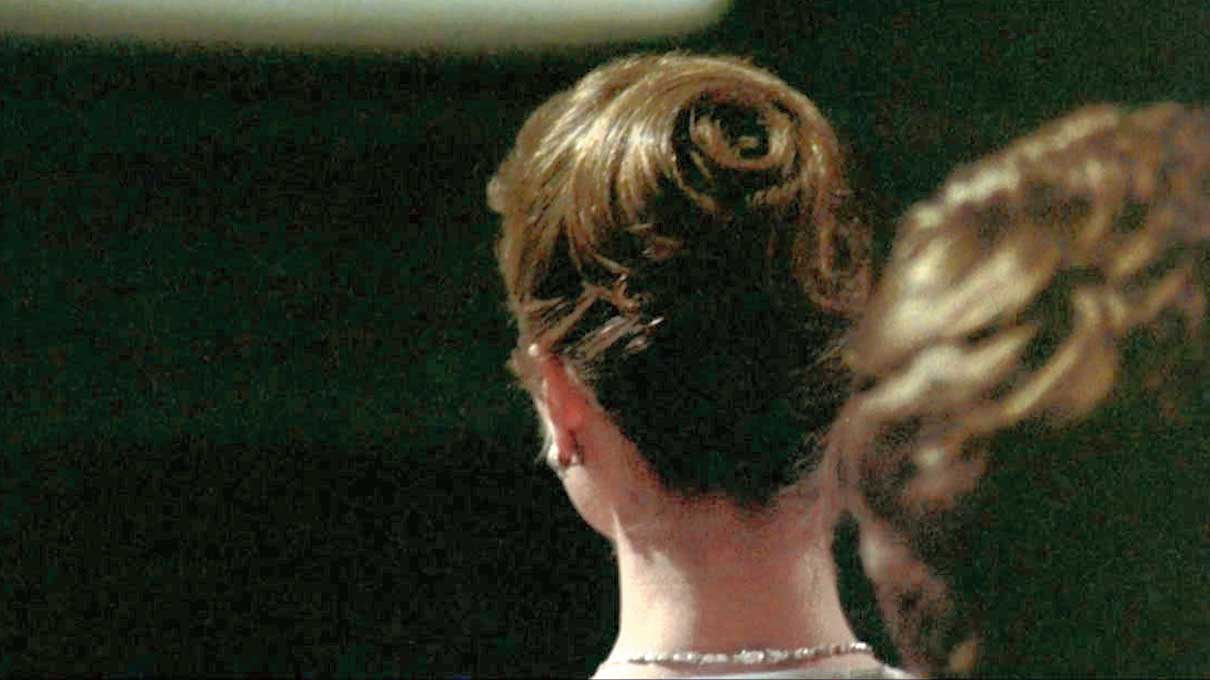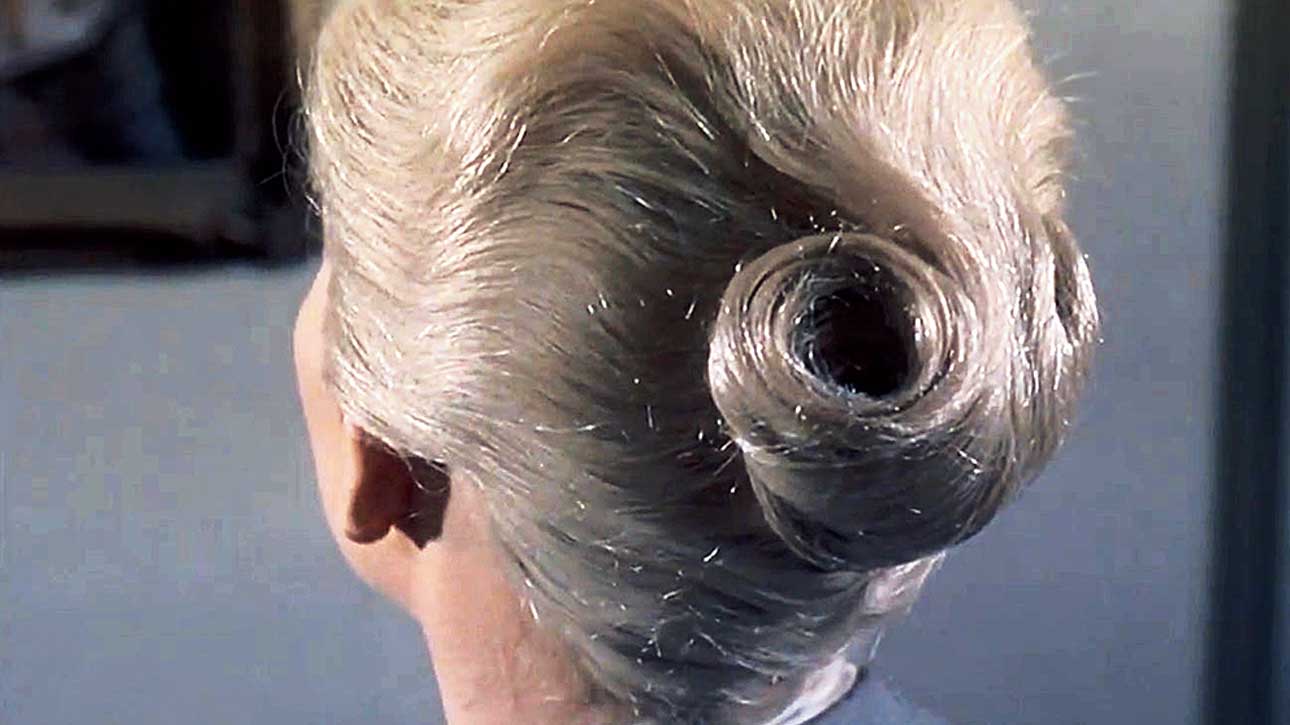“Suspense is like a woman,” Alfred Hitchcock had said at the peak of his career in Hollywood, “The more left to the imagination, the more the excitement.” The sexism in these words would have been unpleasant to our ears if they had not been spoken shortly after the release of Vertigo in 1958. Perhaps the most enigmatic of his masterpieces, it is a film that gets to the melancholy and guilt-ridden fragility at the heart of the imagination of a man obsessed and excited by the appearance (in every sense) of a woman.
When it comes to what Kim Novak must look like and wear after she seems to have returned mysteriously from the dead, James Stewart knows exactly what he wants — just as Hitchcock himself knew what he wanted from his heroines, with a sort of brutal exactitude and to the last detail. Very often, for Hitchcock, the latter had to do with how the actor did her hair. In Vertigo, the Nordic chill at the core of Novak’s bra-less carnality finds its most alluring expression in the way her ice-blonde hair is tied in a tightly coiled chignon, which Stewart’s eye — and Hitchcock’s camera — stalks throughout the film.
Not for nothing is Novak called Madeleine in the film. It is a name traditionally linked with golden hair, high towers, erotic menace, time lost and then unexpectedly regained. And Madeleine’s chignon lurks in the labyrinths of post-Hitchcockian cinematic memory. Think of “The Woman” in Chris Marker’s La Jetée (1962) and his Vertigo-haunted documentary, Sans Soleil (1983); of Catherine Deneuve in Luis Buñuel’s Belle de Jour (1967); Charlotte Rampling in Liliana Cavani’s The Night Porter (1974); Sharon Stone in Paul Verhoeven’s Basic Instinct (1992); and Isabelle Huppert at the grisly end of Michael Haneke’s The Piano Teacher (2001).
Apart from being fearfully stylish women played by consummately skilled actors, they are all — except one (Cavani’s Rampling) — creatures of a male director’s imagination. All of them victims as well as victimisers, their peculiarly powerful powerlessness is caught within the spirals of their chignon at key moments of the films that they inhabit. We are often made to watch them doing up their hair, or redoing it after it has come dramatically or dangerously undone. As the camera, fixated on their hairdo, tracks them from behind, we are left to imagine the play of expressions on their faces or what is going on inside their heads, because we are given no, or only partial, visual access to how they are presenting themselves frontally.

Charlotte Rampling in The Night Porter File Picture
So, during these sequences, that roll of hair curling around a central void pulls our eye into its eye of darkness (like the vortex of blood and water in the Shower Scene of Psycho) and begins to stand in for what Hitchcock will not — or not yet — let us know about his women. We are not told what they are up to and, equally, what is being done to them. This intertwining of fear and desire, mystery and illusion, what shuts us out and what draws us in, is what makes up their maker’s art of suspense. In Vertigo, it generates a motif — a recurring structure of time, space and feeling — that takes on a life of its own, both in the film and in its afterlives. It comes to us through the film’s title sequence and music, in its dreams and doubles and flashbacks, in details of architecture and the design of objects, in the rings of time on an ancient stump of sequoia, apart from being borne in the twists and turns of its heroine’s signature coiffure.
Ultimately, this focusing of our gaze on Kim Novak’s chignon is about “power and freedom”. “Coupled together, these two words are repeated three times in Vertigo,” Chris Marker points out in his extensive notes on the film. Power and freedom become keywords in the film’s enactment of its Pygmalion-like director’s uncompromising and, in the case of Vertigo, tragic understanding of ‘style’ itself. What does it mean for a man to style a woman, and for a woman to be styled by a man — inwardly and outwardly, quite literally from head to toe. What kind of power does she embody when it comes at the cost of her freedom to be who she is or wishes to be?
“If I let you change me, will that do it?” Novak asks Stewart as he takes absolute control of her make-over in the many-mirrored trial-room of a dressmaker’s store that she would never be able to afford for herself. “If I do what you tell me,” she persists, “will you love me?” “Yes…yes,” he answers distractedly, for she is much less important to him than his vision of who he wants her to become. “All right then, I’ll do it,” she gives in, “I don’t care anymore about me.”











